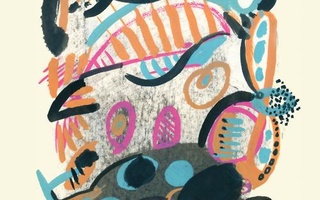“Chatroom” is a hard play to do well. The 2010 film adaptation received a measly nine percent on Rotten Tomatoes, where critics called it “awkward and outdated,” its characters “underwritten,” and its dialogue “pantomimic.” Unavoidably, the Harvard-Radcliffe Dramatic Club’s version, which ran Mar. 6 to 9, suffered from the same problems in its script. But as director Jamie P. Herring ’18 makes clear in his director’s note, “Chatroom” and the issues it raises have taken on a new significance this year at Harvard. Herring smartly refocused on the far more relevant themes of mental health and isolation rather than online bullying. Buoyed by the visible passion of director and cast and led by strong performances, “Chatroom” proved a surprisingly moving production.
Its story is simple. Jim (Ali L. Astin ’19), a depressed teenager, seeks companionship in a chatroom supposedly populated by fellow residents of the Chiswick area. There, he encounters Jack (Federico Roitman ’18) and Emily (Audrey S. Thorne ’19), who are timid, conscientious teens with their own struggles, as well as William (Kimberly E. Osagie, a student at the Graduate School of Education) and Ava (Karoline K. Xu ’16), who are power-hungry bullies. He has previously spoken, in a more formal online therapy setting, with Laura (Inaara Shiraz ’19). The bullies convince Jim that they want the best for him and try to convince him to commit suicide; the other characters object.
Especially considering the script’s threadbare characterizations and unrelenting melodrama, the depth with which Herring and the cast imbued these characters was nothing short of miraculous. The online gimmick raised a further challenge: For the duration of the play, the actors sat on glowing blue boxes and stared straight into the audience, so they were deprived of the use of their bodies and of eye contact. Yet each created surprisingly believable characters. Although the whole cast clearly cared deeply about the show, Astin especially seemed to pour herself into her role: Sporting an impressive Chiswick accent, her Jim was acutely earnest and convincingly desperate. Her powerful presence at center stage helped to mitigate the script’s flaws and to build tension through the gripping climax. Osagie portrayed William with enough malice to make for a sufficiently strong villain, but she also gave him a subtle vulnerability beneath his vicious exterior. Again, she succeeded not because of but in spite of the script.
Staging decisions had more mixed results. The bare-bones set—just boxes and a projection screen—successfully brought the eerie, dissociated world of the chatrooms to life. The lighting, designed by Casey R. Goggin ’19, was simple but well-conceived: Lights shone on the “online” characters and went dark to indicate logging off, an effective device in converting the digital world to that of the stage. Additionally, the intense, full-front lighting augmented the actors’ facial movements, which was especially important given their aforementioned physical constraints. Scenes were demarcated by music and projections of a static pattern. Herring's musical choices were mostly puzzling: Early in the show, the soundtrack was unhelpfully melodramatic; later, it was the Green Day song “Good Riddance,” which was simply dissonant. He redeemed himself, in this regard, at the show’s conclusion with Frankie Laine’s “Rawhide,” which served as a defiant exclamation point. The static projection, designed by Roitman (who performed admirably as Jack), was unnecessary and a bit distracting, though essentially harmless.
The original “Chatroom” was fundamentally not about mental illness. It played primarily to mid-2000s fears about the sinister dangers of the internet’s anonymity, which, thanks to Facebook, seem obsolete. But Herring here transformed it into a heartfelt portrait not of people’s malicious tendencies but of their vulnerabilities, their better angels, and their hope in the face of despair. A sadly relevant commentary, the HRDC’s “Chatroom” was an impressively compelling adaptation.
This article has been revised to reflect the following correction:
CORRECTION: March 11, 2016, at 3:30 p.m.
A previous version of this article misspelled the name of Federico Roitman ’18 and incorrectly stated that Austin B. Weber ’19 designed the music for “Chatroom.”
Read more in Arts
The Microscope, Part 1Recommended Articles
-
Herring Chosen Director of U.N. Atomic Energy GroupE. Pendleton Herring, associate professor of Government currently on leave of absence from the University, has been appointed acting director
-
Astrophysics Center Aids BiodiversityIn the stagnant wetlands near the Alewife MBTA station, the bird calls are deafening. Hundreds of wrens swoop through the
-
 Future Islands Sing Beautifully of Heartbreak
Future Islands Sing Beautifully of Heartbreak -
 Zuckerberg’s Welcome: Kind Gesture, or Selfish Plot?
Zuckerberg’s Welcome: Kind Gesture, or Selfish Plot? -
‘Chatroom’ Looks to Start a ConversationThe Harvard-Radcliffe Dramatic Club’s interpretation of the 2005 play-turned-movie will run from Mar. 3 to 6 at the Loeb Experimental Theater. It follows the story of Jim, a depressed teenager who, after failing to find professional help, turns to an online chatroom. Behind the impenetrable veil of the internet, not everyone is who they appear to be.













